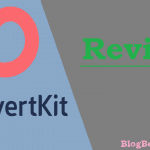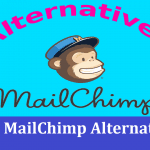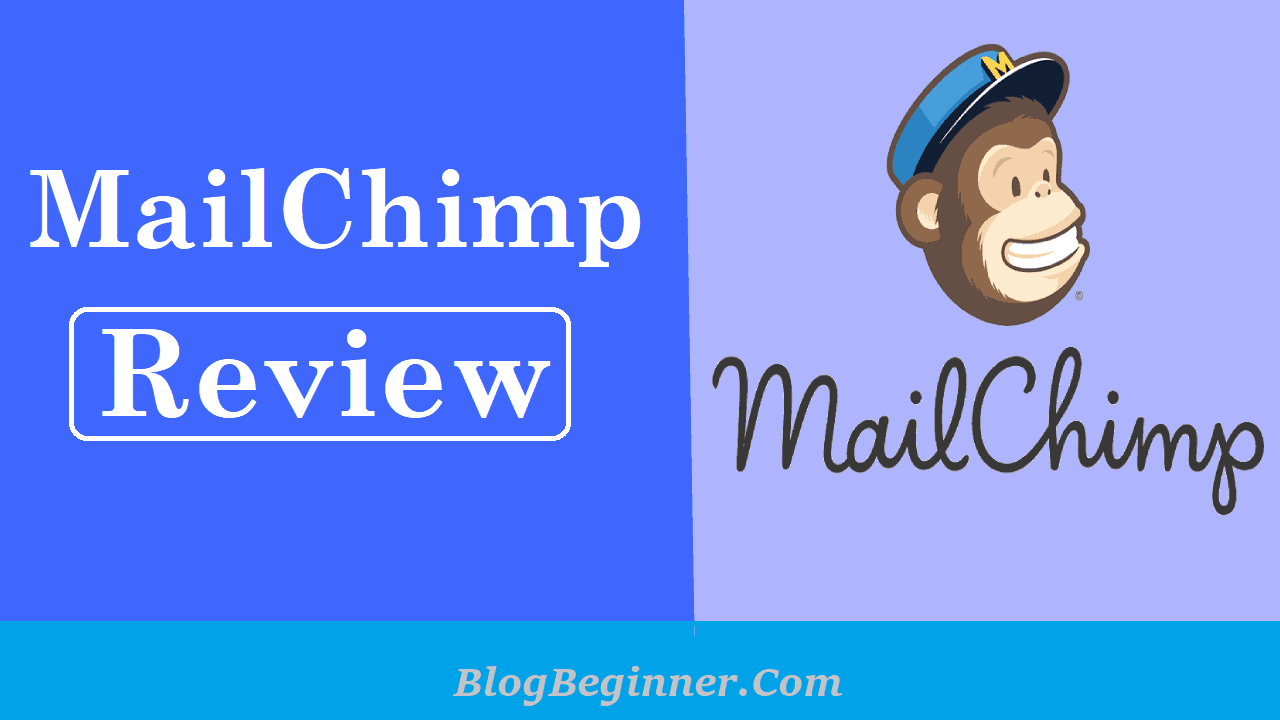
When it comes to the task of increasing the effectiveness of your email marketing campaigns in the present interconnected world of today, the best way is through email marketing.
Learning to do email marketing is among the most important things you can do if you own a business, or even in the case of operating a blog and you are looking to increase your regular readership base.
Part of making this happen is making sure you have a good email hosting service.
There are numerous email hosting services – a good thing – but it can also make it very hard to narrow it down to a few choices.
In this article, we choose to focus on one of these providers, which you have probably heard before – a MailChimp review.
Hopefully, it will be easier to make a decision on whether it works for you or not.
Contents In Page
What is MailChimp?
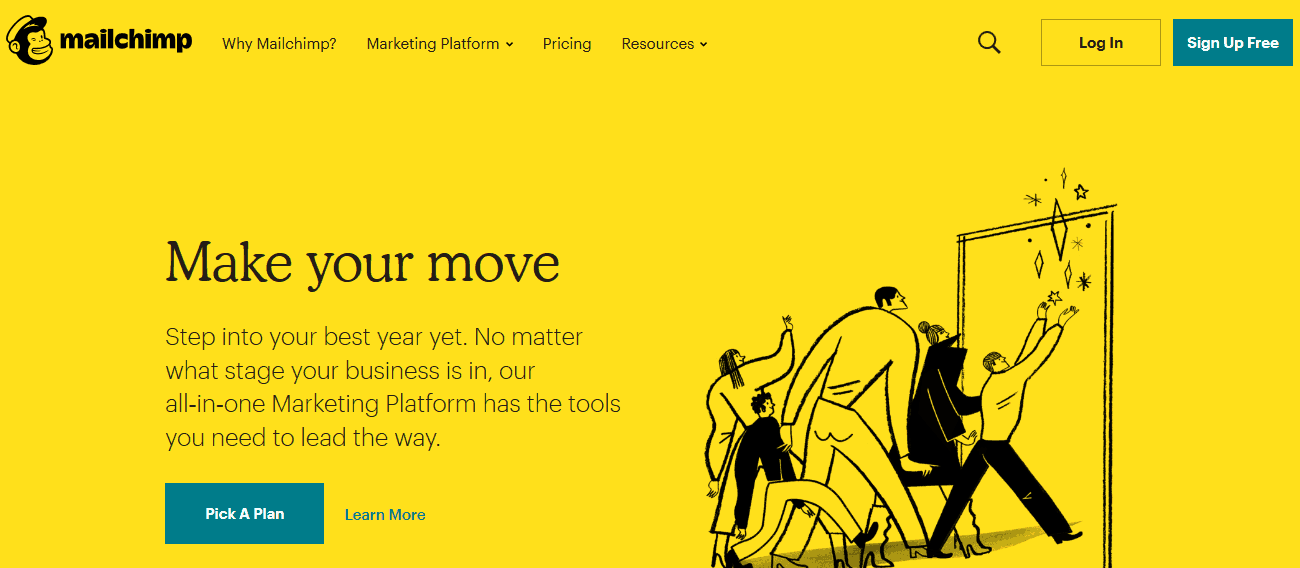
As one of the first tools for sending newsletters, MailChimp has continuously endeared itself in the minds of many – and it is not just because of its charming monkey-fied mascot.
They do have excellent levels of marketing their services, and this results in a daily rate of more than 600 million emails sent through their platform.
The company began in 2001 and is among the most famous and largest providers of the service today. There are many advantages that stand out with it; from its beautiful aesthetics, a forever free plan, and an interface that is easy to use.
They also have almost 20 million customers around the world, and this number is still growing.
MailChimp seems to be excellent on the surface, but they are still lacking in many aspects.
One major drawback we noticed in our MailChimp review is their slow pace of innovation, which has led to some marketers and prominent bloggers switching to other email marketing platforms, which we will delve into.
MailChimp Review By Experts & Users
[wp-review]
Top 5 Competitors Reviews
➩ Aweber Review
➩ ConvertKit Review
➩ GetResponse Review
➩ Constant Contact Review
➩ MailerLite Review
10 MailChimp Pros or Advantages
1. Managing your audience
Among the major standout aspects we find in our MailChimp review is their content management function, which you can easily view as an alternative to the usual CRM system you would find in other platforms.
Through their heading ‘Audience’, you can analyze the functionality and contact management through their dashboard.
You can also use it to find the usual features, such as importation of lists and manual addition of contacts, as well as monitoring the behavior of your contacts.
For instance, when looking at the capabilities of audience segmentation, you will notice that MailChimp can build their segments automatically – unlike many platforms that give you insights such as demographics and opening rates but leave you to build the segments on your own.
MailChimp achieves this through using a learning model that is machine-based, and predicts the frequency or chances of a specific subscriber shopping with you again, or the money they are likely to spend on their next purchase.
Afterwards, you can send campaigns to them from the dashboard.
All the segments that are available – whether MailChimp created them or you did it – are all dynamic.
This means that rather than you doing the job of maintaining the data, the platform itself will move contacts out or in segments, using the basis of whether they meet or do not meet certain criteria.
The more the automation, the better you can place targets and marketing campaigns, and the more effective your strategies will become.
This solution takes away much of the work of creating lists and building segments, but it also reduces the chances of accidentally making errors or missing contacts that may grow your revenue.
2. Visual appeal
Everything regarding the presentation of this platform is attractive – right from the logo and mascot, to the features available, all which prove very helpful to bloggers in particular.
These features include Social Pro, and RSS-to-email automation.
Aside from this though, MailChimp is very easy to use, even if you are a beginner to email management platforms.
Probably one of its strengths is that it uses all the user experience reviews that it gets, and makes improvements to the system.
These even include seemingly small details, such as the anticipation it gives you right before you send email campaigns, and even congratulating you after you are done.
3. Signup forms
If you want, it is possible to add your unique branding to your signup forms, as long as you want to customize them.
It is possible to integrate these forms on your social media pages and website as well, and get signups originating from mobile devices and import existing lists.
In order to maintain the organization of your data between systems, you can utilize integrations to keep them running.
There are some pre-built segments in the system that use other integrations as well, likely to increase the convenience for your visitors.
These include Facebook signup forms, MailChimp apps for iOS, Android, or on the web, or a hosted sign up form.
Regardless of the specific user base you have, you can use these integrations to reach out and market to them in the best and most effective way.
The first is using the platform’s built-in editor, which we noticed to be average for use in our MailChimp review, unlike other platforms that take a more professional-looking approach.
Once you finish, it gives you a code, which you will then embed on your website, such as at the end of your posts or a sidebar.
You can also utilize the Subscriber popup option, which will then create an opt-in form in a pop-up style.
What makes this default method slightly disappointing is the interface, which can seem clunky – especially when you are used to using other email hosting editors before.
4. Creating Campaigns
Among the most important concepts of MailChimp are their marketing campaigns, which is a major reason why their platform is so popular.
Using their campaign feature, you will have a chance to create the emails you want, and they make this easier for you through providing a step-by-step workflow interface for set up.
The first thing to do is picking the type of campaign you want to create. These are:
- Regular – allows you to create and send HTML emails
- A/B test
- Plain text – these have no special formatting or pictures
- Automated
After choosing the type of campaign, you select the subscribers on your list that you want to send to. You can choose your entire list or pick certain people based on specific criteria, which you can also save for future use. For instance, some criteria you can use are:
- Whether the subscriber replied to a certain campaign
- How many times they opened the specific campaign
- The subscribers who opened the last 10 campaigns
- Subscribers who completed certain campaign goals
The third step is entering the information of your campaign, which includes the campaign name, the subject line, as well as any tracking options you want to enable. For instance, these can include tracking the clicks you get, the opens, e-commerce tracking, and so on.
The fourth step sis creating a template that you will use for your campaign. You can decide to use the pre-set layouts we mentioned above for your emails, or use extra templates from outside the platform’s editor.
The best aspect of this feature is the drag-and-drop editor that comes with any of the packages available, since you can rearrange icons and fit elements as you want, or insert components such as buttons, videos and text blocks.
If you want to change the template’s appearance, you can click the Design tab and change the style elements such as borders and colors.
5. Tracking campaigns
Outreach campaigns and email marketing can be a major boost for your business, especially when you handle it well.
Fortunately MailChimp has a less annoying CRM to help in the process, and it does so through creating a two-way connection between your MailChimp lists and CRM groups.
The aim is to sync your tool to better manage your mail campaigns while logging the activity in the CRM simultaneously.
In order to do so, you go to the Settings tab, and select the MailChimp Integration can authorize the integration in the site.
Once this connection is set, you are shown a table of your lists, each having a drop-down menu for easier monitoring. If you want to sync a group or not, you can choose to do so.
Note though, that you can only sync a group once, and the connection between the audience and group is two-way.
Because of this, it is not a good idea to link an audience with more than one group – they will not function properly.
There are some important tips to remember here:
- Only email addresses and names will sync between the CRM and MailChimp, so any other field (such as custom fields, phone numbers and titles) will not appear.
- Any new contacts you add in MailChimp will automatically sync to the CRM. This is great if you are adding your subscribers to specific mailing lists.
- If you edit a contact in MailChimp (an already synced one), the CRM will only save the email. The reason is because it does not want to lose or overwrite any email information, so it will not tamper with this anyway.
- All your MailChimp activity is subject to their terms of use – do not have the tendency of spamming people. The company takes this very seriously, and they can even block your account if it is found to violate this rule.
- If a contact unsubscribes from a MailChimp audience, they will only be removed from the CRM group, but their information is still in the system. The only exception is if you are the one removing that person’s name.
6. Automation
Unlike what you might see in other email management platforms, you will not find endless variety of workflows here.
Rather than letting you make your own, MailChimp has 15 pre-made workflows you need to choose from.
When you want to access these automations, you create a new campaign and select the ‘Automated’ tab.
7. Customer contacts and support
Customer service is very important when considering signing up for an email management service.
Things might go wrong in your quest to develop your own platform, and you need to know whether the provider will give you a recourse.
Despite the friendliness from the customer service staff, there is a major drawback we note in our MailChimp review – the customer support you receive is entirely dependent on your pricing plan, and it will only work for paid users rather than the free version.
While the platform goes a long way to give support to its customers on a 24/7 basis (except for free users), this will only include email support.
If the idea of looking up information on your own is fine with you, it will not be a problem here – all their knowledgebase articles are highly detailed, and they include plenty of links, videos and screenshots that help you along the way.
However, it is still quite difficult for people on the free plan to access their customer care service.
In fact, the only way you can actually get their contact details is scrolling to the bottom section of their knowledgebase articles, but this is not obvious to everyone.
If you are on any of their paid plans and have an issue with something, it is expected that you will sort things on your own while figuring out the platform – even for cases beyond your control such as system bugs.
Other than that, they also have a comprehensive knowledgebase and FAQ section – it has answers to the most common questions on the platform.
8. Mailchimp 101
No matter how easy a service provider may indicate that a platform is to use, a learning process is still required to get up to speed. MailChimp covers this need with its MailChimp 101 user guide.
This is aimed at persons who are new to the platform, and those who may be new to the world of email marketing.
You can expect the experience to take you from being someone who has never seen an email platform before to being someone who is an expert at creating campaigns and reaching the desired audience.
It is a well-designed learning platform.
9. GDPR Compliance
Whenever there is the management of data, GDPR considerations are critical.
The said data must be securely managed, its integrity must be maintained, and it should also only be made available to authorized individuals.
MailChimp maintains GDPR compliance on several levels, and it allows you to do so for your customers by extension.
This provides a base for building customer loyalty since you can do things like grant data requests in a timely manner.
This is thanks to an organized and secure information system on the back end that you can leverage for your benefit.
10. The MailChimp Glossary
Marketing is a consistently evolving discipline. There is a variety of concepts associated with it, and sometimes things can get a bit confusing.
When you throw the said evolution into the mix, these concepts are consistently revised.
Sometimes the way ideas are expressed changes, or you may find that new terms and concepts that you need to know, enter the fray.
The MailChimp Glossary is a consistently updated catalog of these concepts to help you stay on top of the marketing game.
It is also well organized, so that you can browse it in an easily understandable manner.
MailChimp Deals & Coupons
[sociallocker id=”14990″]

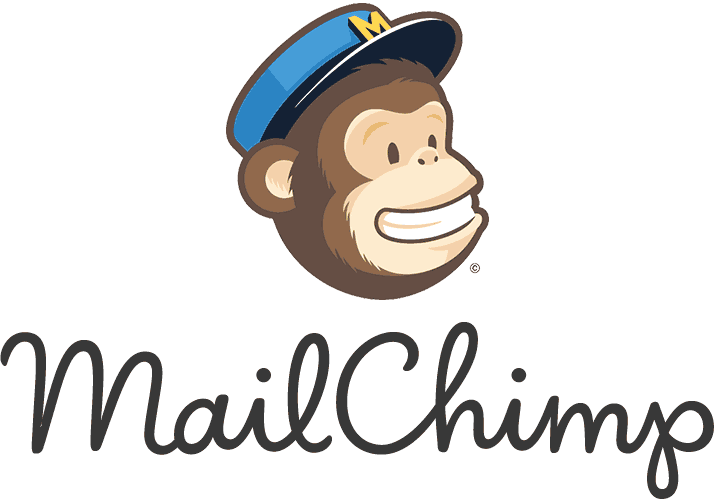
25% Off For Selected Plans


15% Off For Limited Time Offer


5$ Instant Discount For New Purchase


10% Off On All Plans


22% Off On Your Next Order


20% Off For Selected Plans
➩ View All 300+ Deals & Coupons
[/sociallocker]Top 10 Things to Check
➩ Top 10 Best Email Marketing Services
➩ Top 10 Best Web Hosting
➩ Top 10 Best WordPress Hosting
Quick Pros & Cons
Pros
- The platform will give you comprehensive reports that contain all the information you need to know
- Their free plan is very generous
- Good template editor for basic use
Cons
- The costs of paid subscription are quite high
- Limited automation of emails
- Their in-built email editor is limited for advanced use
Email solutions that MailChimp offers
The overall overview of their packages and what they offer is quite similar to what you would get from other email hosting platforms, as it has all the tools you need to create emails, collect leads, and so on.
If you own a personal blog or a small to medium business website, MailChimp’s solutions will largely work for you because their templates and tools are enough to cover most of your needs, if not all.
The other feature that is also accessible on the free package is their CRM, which is in-built – this will work if you are searching for an all-in-one solution.
You will be happy to know that the company is also evolving and changing the features that they offer, as new ones come up all the time. They also have integration with social media platforms, and it is easy to customize the template section because of its decent sizing.
Aside from this, you will also get useful marketing features as part of their offerings. These include app and service integrations, contact segmenting, time-zone based sending, autoresponders, A/B testing, and so much more.
Aside from their free plan, they also have pay-as-you-use options, which a low-volume client can find cheaper than those offered on other platforms. These plans will also include certain extras such as integration and automation choices.
All pro features have the following benefits:
- Authentication of your account –
This is through the use of DomainKeys, SenderID, as well as SPF and DKIM
- Different levels to access your account –
There are five levels you can be in at a time: manager, author, owner, viewer, and admin.
- Integrations –
You have access to more than 800 different integrations, which you can use on your website and emails. Ranging from website and social media integrations to eCommerce widgets, you will struggle to find areas that are unrepresented.
The only surprising one here is the lack of Shopify integration, although you can connect your Shopify platform with them through third-party integrators.
- Landing page editor –
You can use this to create product pages or sign-up pages for new subscribers.
However, you should note that the function is still quite basic (it even lacks an A/B testing feature), so you are better off looking for another email hosting service if advanced automation is your goal.
You can still utilize your domain name, but you will have to pay an annual fee of $100.
Some quick facts on the pricing
The free plan is quite impressive and gives you plenty of freedom that you will hardly find in other email providers. For instance, it allows you to send a monthly limit of 10,000 emails and have a maximum of 2,000 subscribers.
You can then upgrade to paid plans when you exceed these limits, and MailChimp has 3 of them: Premium, Standard, and Essentials.
Free plan
Interestingly, the free plan has no limits – it is free forever until you decide you want to upgrade. Some benefits include:
- The opportunity to grow your subscriber base to 2,000 people
- Send a maximum of 10,000 emails every month
- Email support, which is included for 30 days
Essentials
It starts at $9.99 per month. However, there are additional tiers, which are:
- Maximum of 5,000 subscribers – $49.99 per month
- Maximum of 10,000 subscribers – $74.99 per month
- Maximum of 25,000 subscribers – $189 per month
- Maximum of 50,000 subscribers – $259 per month
Standard plan
It starts at $14.99 per month. Tiers are:
- Maximum of 5,000 subscribers – $74.99 every month
- Maximum of 10,000 subscribers – $99 every month
Premium plan
It starts at $299 every month. Tiers above that are:
- Maximum of 20,000 subscribers – $399 every month
- Maximum of 50,000 subscribers – $599 every month
Before settling on your monthly rates or see the features of all the premium plans, the platform’s website has a pricing calculator at the bottom of their pricing page.
Final thoughts
-
Company Details
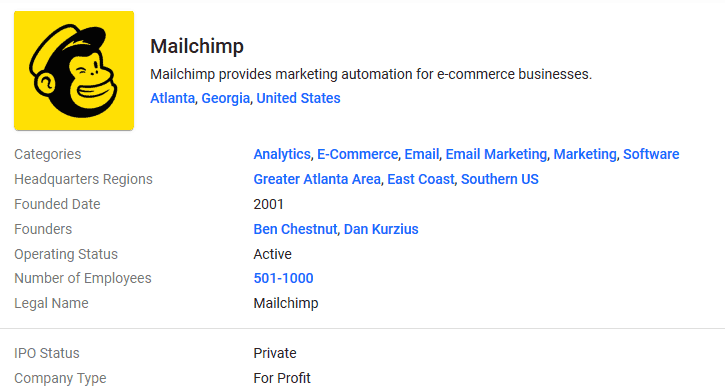
Source: https://www.crunchbase.com/organization/mailchimp
It is not surprising from our MailChimp review that part of the reason making it so popular is its free offer, which is quite attractive for many people – especially on a budget.
Even though you might not be on a budget, it will still be good for business owners and bloggers that still want a tool that is easy to use and has plenty of advanced features.
However, you should note that you do not necessarily need to sign up for their premium plans because the free plan is so extensive on its own.
In addition, you will not get money-back guarantees or refunds easily – the only way to get a refund in this platform is if your account was terminated without a reason, or experiencing a technical error, and it has to be on behalf of MailChimp itself.


